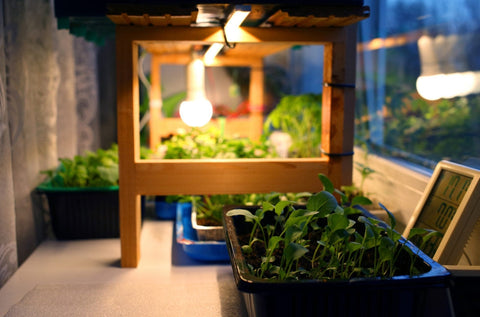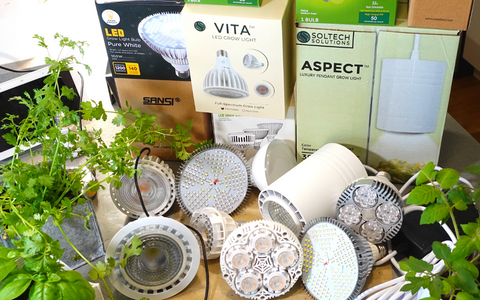Plants are pretty amazing things, they soak up our CO2, feed us, and shelter us. It’s fair to say that we need them far more than they need us. But did you know that they’re also using their nighttime rest periods to do complicated math intended to ensure both their own survival and that of their descendants?
In this article, we explore some of the amazing things that plants are doing while you and I are busy snoring, or dribbling on our pillows. We also created a Youtube video for you to watch. Embed below.
What Do Plants During The Day?
You’re probably at least somewhat familiar with how plants spend their days. The process known as photosynthesis involves taking energy from sunshine and using it to convert water and carbon dioxide into glucose and oxygen. This daily accumulation of glucose and oxygen only takes place while the sun is up (or grow lights are on).
What Do Plants Do At Night?
When the lights go out (or the sun goes down) plants do their best work.
Plants Do Math At Night
Scientists at the John Innes Centre in the UK showed that plants do complicated ‘math’ (arithmetic division) to figure out how to ration their available supplies of starch throughout the night. If plants know that they have a long night ahead, they will need to ration their starch supplies more carefully, making sure that they don’t run out until dawn arrives. If the night is shorter, they can afford to consume their energy reserves more quickly.
Side note: You’re probably messing up this plant-math if you aren’t using a timer for your grow lights. Unpredictable darkness periods make it difficult for plants to get their arithmetic right!
The science of how plants respond to day length is called Photoperiodism, and we’ll talk more about that in the follow-up to this article, linked below.

As plants ‘exhale’ during the evening, they are releasing oxygen back into the atmosphere. At the same time, the accumulated glucose is being used for growth. This is what fuels the formation of new leaves, stems, and flowers.
Changes In Day Length Help Plants Understand Seasonality
The other really interesting thing plants are doing at night is trying to keep tabs on what time of year it is (temperature is also handy here). Plants are excellent predictors of the changing seasons, and they’ve been around long enough to know that there are certain times of the year that they simply don’t like, and are unlikely to survive. Plants are therefore using the length of the night to estimate when they are likely to perish. This forecast, in turn, tells them when they should have some seeds ready in order to ensure their offspring live on. Seeds are produced as part of the flowering process. Plants are even smart enough to place those seeds inside yummy fruits and vegetables that will entice animals and humans to eat them. In doing so, we become part of their workforce, which assists them with the distribution of their seeds. The yummier the fruit, the larger the workforce the plant is likely to recruit. Coffee is one of the most successful plants in the world in this respect; it has not only convinced us humans to love and care for it across multiple continents in an almost cult-like way, but it has also trained us to be daily consumers of (slaves to?) its addictive fruit!
Shouldn’t We Let Plants Just Sleep All Day Then?
Unfortunately, it’s not that simple! How plants (and other organisms) respond to the length of darkness is known as Photoperiodism. As important as the night time period is for plants, so too is the length of daytime.
The daytime is when light is available, and that light is what provides the energy to fuel their growth. Without enough light, there is not enough energy to grow. A plants’ daily ‘appetite’ for light is measured using a term called Daily Light Integral, or DLI. Decorative indoor plants like the popular pothos, snake plants, or monstera might be content with a DLI of 1-4 mol/m2/day, but most edible plants will need a DLI somewhere in the 10 – 30 mol/m2/day range.
To learn more about how light duration impacts your plants, and to find out exactly how long you should leave your grow lights on for, we recommend you check out our separate blog called ‘How Long To Leave Grow Lights On For?” (coming soon!)











Thank you! Can’t wait to read it!